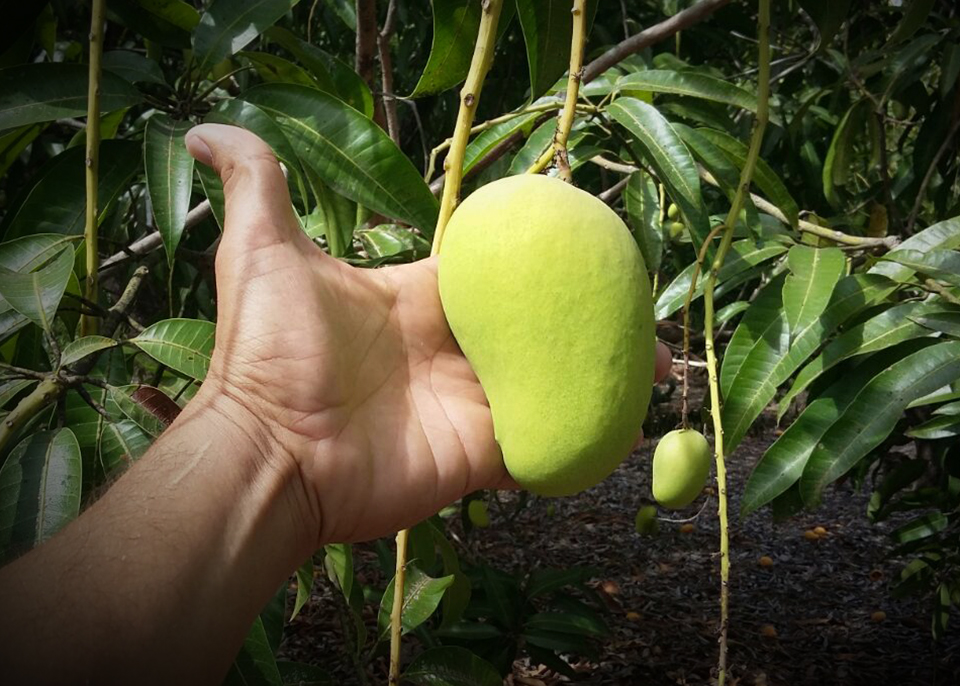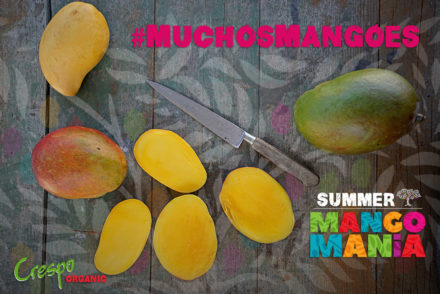Tricky transitioning of regions in Mexican mango season- south to north
The Mexican mango season lasts for about nine months and is made up of 7 different regions, eight if you separate Los Mochis, as most do. Los Mochis is USDA sanctioned “fruit fly free zone” and therefore the hot water baths (hydro-thermic treatment) is not necessary making the Los Mochis region unique in the Mexican mango spectrum.
Chiapas, Oaxaca, Guerrero, Michoacán, Jalisco, Nayarit, Sinaloa and Los Mochis are the main mango production regions in Mexico with the majority of fruit production being consolidated in Chiapas, Oaxaca, Michoacán, Nayarit and Sinaloa, also often referred to as the southern regions ( Jan –May) and the northern regions (May-Sept.)
Each of Mexico’s main production regions are all individually considerably larger than the production regions in Peru and Ecuador. Each of the regions typically produces for mangoes for about 3-4 months and there is overlap in almost every region. The southern regions ( Chiapas, Oaxaca, Jalisco) start first and the regions ripen north (Michoacán, Nayarit and Sinaloa) up Mexico’s Pacific coast.
We are currently in the middle of the most important regional transition period of the Mexican mango season; the transition from the southern regions to the northern ones. The transition is always difficult and always happens this time of the year right at the lead up to Conco De Mayo- the biggest holiday (most demand) falling inside the Mexico Mango season .
Transition times are tricky, you can’t guarantee their timeing- one region finishes early the other starts late and orchards (new and old) don’t always produce the sizes the market needs or rather will pay top dollar for. Since the fruit isn’t peaking in any region during this time, ( its ending on one place and beginning in another) there is a finite amount of fruit, even in a voluminous fruit years.
A few weeks ago, when the transition began, it was clear that there was a “shortage” of fruit coming for a good portion of May and more specifically for conventional markets. Everyone in the business was talking about it and of course people acted on the news. The market burst into frenzy and most folks ordered obscenely more than needed. With Cinco de Mayo approaching and demand up considerably from last season, it seemed like a sure bet.
This week, with only a few days left before Cinco de Mayo, the markets went into hysteria as everyone noticed their plump coolers and still an abundant of fruit coming from Mexico as well as Guatemala on the CV side. I’d like to say confusion set in, and that the people were suddenly disbelieving a shortage was coming, but what actually happened was simply that prices on conventional mangoes were pushed down and pushed down rapidly as is common in times of major market over supply. (We are talking round mangoes take in mind- Ataulfos are still having a good time, price wise.)
This week’s hysteria is trying hard to push the prices down further, but the realties of supply show a different picture , one that really does show an overall market shortage for most of May. This news is incredibly important for the organic sector which often works with more finite volumes. The conventional market hysteria can cause a lot of confusion in the organic markets, so it’s important to know the reasons behind the hysteria and get to the truth.
Bear with me of this next section; it covers a lot of the current conventional market causes and effects. The CV market doesn’t always run parallel to the organic market, yet it puts tremendous pressure on organic demand and pricing.
- Guatemala had an extremely ample fruit year, as did all of Central America as a whole. They sent considerable amounts to the USA- some could argue the quality wasn’t the best, but it seemed to cause only minimal market commotion and therefore became much heavier competition for Mexico’s early region fruit than usual. This past week Guatemala sent record amounts into the USA and was partly to blame for the hysteria. Most important piece of information to know about the Guatemala fruit is they are ending in a week. Growers are trying to take advantage of shipping as much fruit as they can before it ends- hence the crazy amounts arriving this week.
- Oaxaca is also partly to blame for the extraordinary amount of fruit in the market place this week. One the conventional side, Oaxacan fruit is ending quicker than expected and growers are scrambling to get as much fruit on the road before the fruit drops to the ground, basically in the same boat as the Guatemalans. Most conventional packhouses in Oaxaca are closing up shop completely in the next 7 days.
- Chiapas Also winding down on the conventional side but still some late season fruit in some areas, very large sizes and finite volumes. Long travel times make this fruit more volatile in addition to fixed low volumes.
- Michoacán Normally by now it would be the main conventional mango region. This year we still have fruit from Oaxaca, Chiapas, Jalisco and Guatemala, so an extra abundance of fruit. But it’s important to remember Michoacán is notorious for small fruit. “Haden country” we call it in the business, and if you want know anything about hadens, know that they are typically very small mangoes, usually averaging 10-12-14cnts. 12-14cnts is not the markets favorite and anytime the markets fill up with these off sizes, the prices plummet. This week the market was flooded with off sizes (small) at a time most people’s inventories were already full.
- Nayarit is basically what all the fuss is about and what is most important to know as we fixate on what we think the market is doing and will do. Nayarit round fruit is still not ready, ataulfos have just started and typically the round mangoes follow behind. Nayarit is projected to start in about 10 -15 days with tommy’s so until then we will continue to see the market dwindle and remember the onset of any region yields small and limited fruit. Be ware of green mangoes shippers cut before brix goals.
Bottom line the market is presently filled with fruit, on both the organic and the conventional side. Most suspect that come next week, mangoes will not be so free flowing as several regions stop all together or reduce shipments drastically. Look for a lot of the wrong sized fruit on the conventional market and price confusions. Keep an eye out for those selling aging inventories, that came before or during the glut, and sit waiting for demand to rise up again.
What this all Means for Crespo Organic Mangoes and our Transition North
First off, as we reported, Empaque Don Jorge is open for business. We are currently shipping our organic mangoes from three different packing houses: Chiapas, Oaxaca and EDJ in Sinaloa. The transition is equally hard for us but with proper planning we can move through it without effecting our fill rates and customer satisfaction scores.
Overall organic demand in the national marketing place is being reported to be up approximately 25% from the prior year (to date) and this increased pressure affects us most during this particular transition period. With ample fruit projected in Nayarit still about 10-15 days out and our southern regions winding down, our fruit like everyone’s is finite and complicated in sizing.
Here is what to expect from each of our current shipping regions during the transition into our PEAK- Crespo Organic Summer Mango Mania season (June- July)
- Chiapas production will continue through most of May with limited but decent volumes of both ataulfos and tommys, which are from one of our later producing sub regions within Chiapas. This region will supply us with the larger fruit for our programs for the next 3 weeks, but again will be limited. We recommend keeping larger inventories on 8/9cnt rounds and 14/16cnt ataulfos through mid May.
- Oaxaca Only a few more weeks –total- in our Oaxaca region and very finite amounts, especially on the tommy’s which wont last more than another week. We will then move into a few orchards of kents, which we anticipate will cause some needed market excitement$. Large sizes will continue from this region but in limited quantities.
- Michoacán Currently we are harvesting tommy atkins from Michoacán and packing that fruit in Sinaloa (EDJ). This fruit is ample but very smaller sized, averaging 12cnts which are a difficult sell in organics. We should see a few hadens as well from this region- expect small fruit. Promotional opportunities on 12cnts for the month of May.
- Nayarit harvest of Ataulfos starts this week and we expect the tommies to follow in a few weeks. By middle to end of May we will start to see some greater volumes on the larger fruit 8-9cnts and we expect the season to continue to be a larger size fruit season with averages of 8-9-10cnts for most of June and July.
- Sinaloa season should commence in June and at the time when Nayarit begins to peak. The months of June and July should be prolific with all sizing. Look for our Crespo Organic specialty varietals at this time: Thai Mangoes, Baby Mangoes and Green Keitt Mangoes. Mangoes should be ample through most of August and reach into September weather (rains) permitting.














No Comments